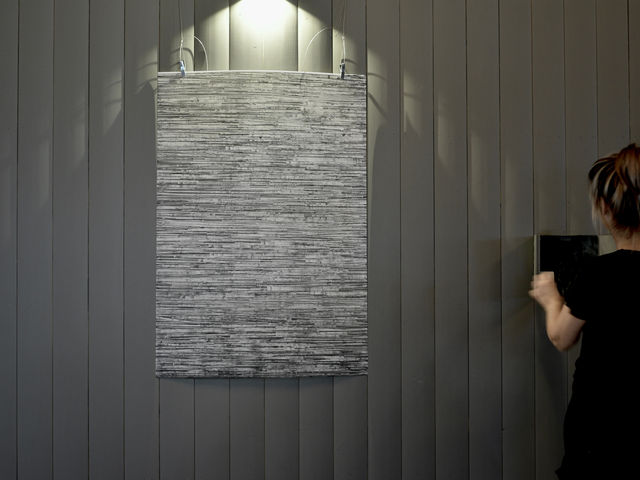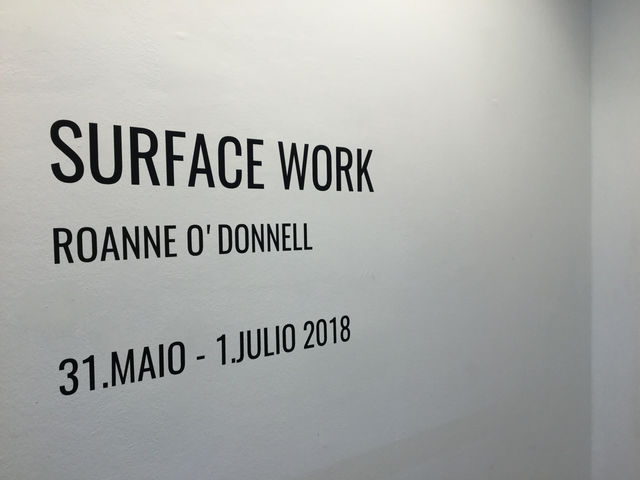exhibitions | the viewer
Observing a viewers reaction to my art is critical; seeing their face or body language when they look at my work, watching how they respond and how they react to the surface physiologically and emotionally. Whether they read and understand the work as I intend it depends on their fluency in art as a language, but how they instinctively react depends on who they are and that fascinates me.
A collector told me that his painting calms him down. A guest at a private view said that a dark piece was staring intensely at him, that he found it disturbing and had to hide from it.Another left an exhibition shortly after arriving as the work hurt his eyes. Due to the multitude of lines, from a distance it is possible to experience a sense of vibration and as you move closer, the surface becomes apparent and one can read its structure.
My challenge is to reconcile the possibility of reaching a wider audience by reproducing the works in print or online with accepting the inevitable dilution and loss that comes with it. We separate the viewer from an intimate experience in a physical space. This dichotomy has existed since the first reproduction of a work was made. I think it is a challenge for most artists, most art, and most viewers. Also, my works do not translate well digitally and are difficult to photograph in their entirety, so I have to represent or illustrate the surfaces with accompanying detailed shots. The viewer cannot experience the whole. We lose something in the distance created by reproduction and gain something by increasing its accessibility. Therefore, being in a physical presence with the work and the viewer, and witnessing their interaction is precious.
















